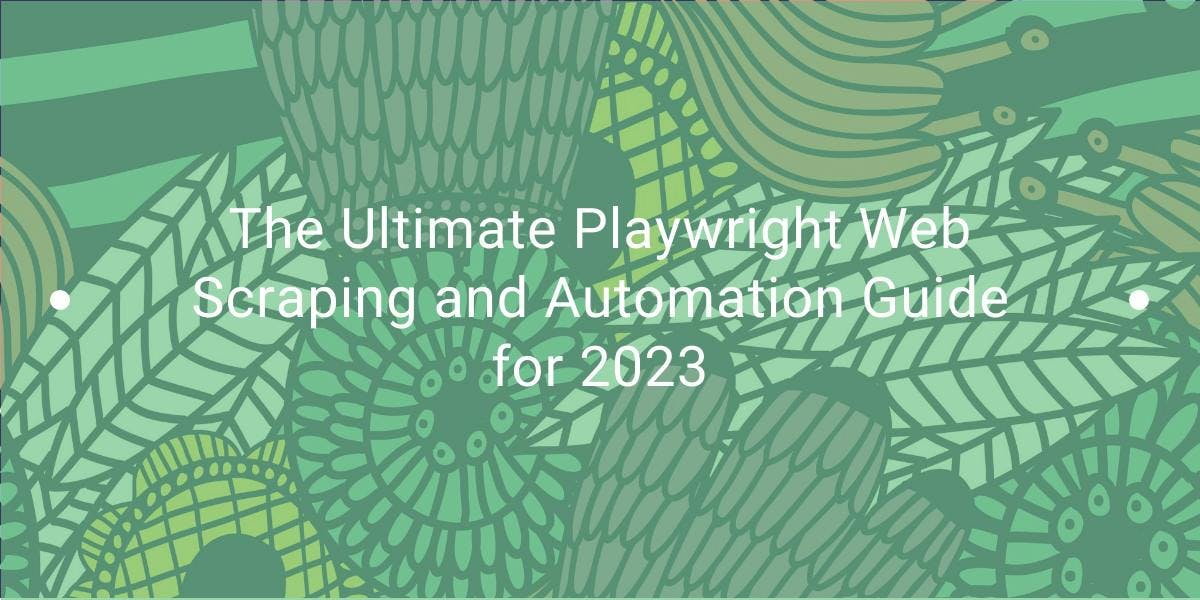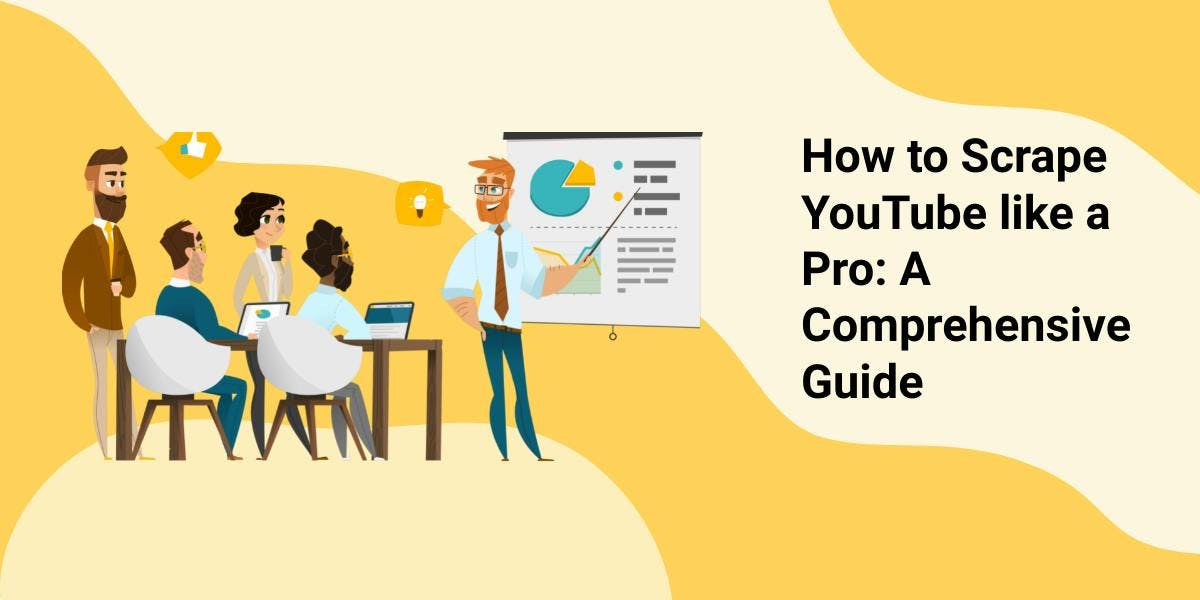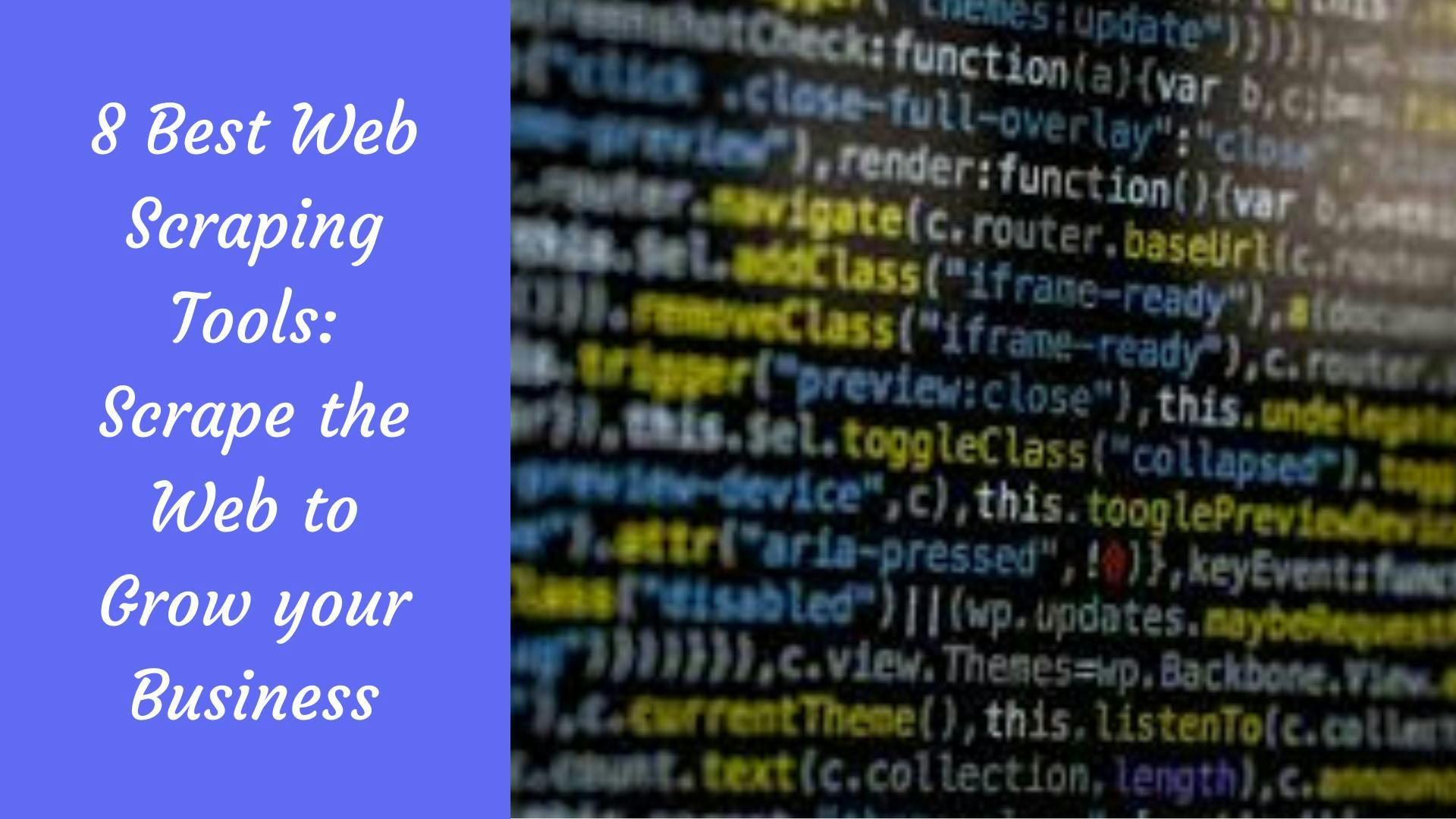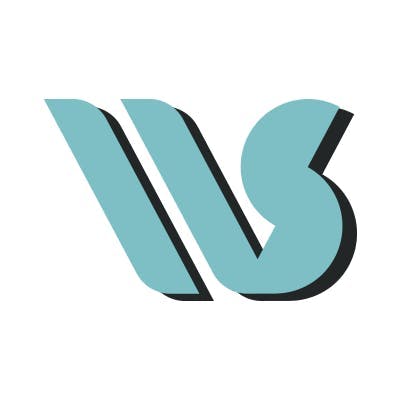The Ultimate List of Web Scraping Tools
Gabriel Cioci on Mar 29 2021
Just as there are plenty of use cases for web scrapers, there are a whole plethora of tools to choose from. Some of them are free, some are extremely easy to use, and some can quickly process a massive load of data. Some have several of those advantages and even more.
With such a wide range of solutions to choose from, it’s easy to get lost in the details and wind up not knowing what product to actually choose.
Our aim with this article is to guide you through the choosing process and help you find the perfect tool for your web scraping needs.
Let’s begin!
What kinds of data extraction tools are there?
Before diving into lists and trying to find the one best tool for you, it would be a lot easier to go over the different types of scrapers out there. All tools that fall into the same category have several characteristics in common. Knowing which type you want will speed up the process.
At the head of the list are the web scraping APIs.
An Application Programming Interface (API) is a computing interface that connects several programs. Programmers use them to define a precise method through which said software can communicate and send data.
In essence, APIs connect different programs, allowing them to work together without the need to have identical architectures and parameters. With it, you can create increasingly complex systems that use plenty of different programs.
We’ll analyze ten data extraction APIs:
- WebScrapingAPI
- ScrapeHero
- Scraper API
- ScraperBox
- ZenScrape
- Scrapingdog
- Diffbot
- ScrapingBot
- ScrapingBee
- ScraperStack
Next on the chopping block are visual web scraping tools. Unlike APIs, these products focus on ease of use and user experience instead of integration with other software.
These tools can either work on your computer or straight in the browser and offer you an interface (usually point-and-click) through which you select the content to scrape. That’s the “visual” part.
Besides the difference in user input, visual tools are similar to APIs. They have more or less the same functionalities, but APIs tend to be less expensive. Still, you’ll see differences from product to product.
In this article, we’ll show you five visual web scraping tools:
- OutWit Hub
- Import.io
- Octoparse
- ParseHub
- Dexi.io
Lastly, we’ll look at programming tools for building web scrapers. Making your own web scraper does require some work and knowledge, but it’s still doable. Whether you’re interested in extracting data with as little expenditure as possible or just find the idea of making your own bot appealing, you don’t have to start from scratch.
Different libraries, frameworks, and various code bits can be freely found online and used to create your scraper. In a sense, you don’t actually have to write most of the code necessary for scraping, just find them and integrate them into your script.
While some functionalities, like Javascript rendering, can be arranged easily, proxies can still be a problem. After all, server maintenance costs money, and relying on public proxies is both inefficient and risky. So, building your scraper will still mean spending some money if you want to create an effective tool.
To make your work easier, you should check out:
- Scrappy - Python
- Beautiful Soup - Python
- Axios - Node.js
- Cheerio - Node.js
- Puppeteer - Headless browser
10 web scraping APIs you should try
1. WebScrapingAPI
WebScrapingAPI is a REST API created with the intent to make developers’ life easier while extracting data. The tool comes equipped with functionalities like:
- Javascript rendering
- Mass scraping operations on any kind of website or page
- 100M+ datacenter, residential and mobile proxies
- Geotargeting with up to 195 available locations
- Rotating proxies
- Captcha, fingerprinting, and IP blocking prevention
- Header, sticky session, and timeout limit customization
- Simple integration with other software products in a variety of programming languages
- Unlimited bandwidth
As with any API on this list, you’ll need some programming experience to start scraping right away. The documentation is easy to understand, to the point that even non-developers can get the hang of things with a bit of patience.
You have quite a bit of liberty in how you use the API too. The documentation covers the following programming languages: Curl, Python, Javascript, Ruby, PHP, Java, C#, and Go.
For quick and simple jobs, the API playground is enough. There, you can set the desired parameters in the interface and instantly get HTML code.
A cool thing about this API (and many other tools on the list) is that it has a freemium payment system. You can opt for the free plan and get 1000 free API calls every month.
2. ScrapeHero
Instead of focusing on one API that works in all situations, the developers at ScrapeHero decided to take a different approach. They built several APIs, each with a particular goal in mind.
The result is that their APIs are very well prepared to scrape the intended targets but don’t work on other sites. So, if you have several targets to extract data from, you’ll need several different APIs. That may sound bad in theory, but the prices aren’t as high as other products.
Additionally, ScrapeHero builds custom web scraping APIs for their customers. In a sense, it’s like making your own personal scraper, designed for your needs but without all the work. Well, you’ll have to spend more money, of course.
Besides custom solutions, they have APIs for:
- Amazon product details and pricing;
- Walmart product details and pricing;
- Amazon product reviews and ratings;
- Amazon search results;
- Amazon offer listings;
- Amazon best sellers;
- News
As you can see, they’re focused on Amazon, which makes sense. It’s the most prominent online marketplace, and it also discourages web scraping on its page by using different layouts.
3. Scraper API
With a big focus on proxy functionalities, Scraper API offers devs all the needed functionalities for big scraping projects with little to no problems. Specifically, their quality proxy pool, anti-Captcha functions, and Javascript rendering mean that you’ll get all the data you need with next to no hurdles.
The API automatically retries failed requests. Paired with the impressive scraping speed, it’s unlikely that you’ll have problems extracting data.
As with any other REST API, the product uses the standard data export format - JSON. Another cool thing for developers is that they offer software development kits for programming languages such as NodeJS, Phyton, Ruby, and PHP.
Scraper API doesn’t have a free tier, but they do offer a one-time trial package of 1000 free API calls. So you get to test it out before spending any money.
4. ScraperBox
ScraperBox is a fast and simple-to-use API that comes with all the essential features to make it an attractive tool.
They use real Chrome browsers to make sure that Javascript doesn’t become a roadblock for the users. They use residential proxies to make the scraper as undetectable as possible and have several location options from around the world to ensure both speed and accessibility. In short, it’s the good stuff.
Like ScrapeHero, the developers have decided to start working on specialized APIs that work well in specific situations. Besides their staple web scraper, they’ve made an API precisely to extract data from Google search results pages. Now they’re working on a scraper to use on Linkedin. As social media pages have login screens and other scraping barriers, their new project might prove quite helpful.
Unlike other APIs, their documentation is currently limited to Curl, Python, Javascript, and PHP. While that’s not bad, support for more programming languages would be welcome.
Another noteworthy fact is their pricing - the product is relatively inexpensive. Add in that they have a free forever plan with 1000 monthly API calls, and ScraperBox becomes a pretty good option.
5. ZenScrape
One nice thing that’s immediately visible for ZenScrape is the interactive demo on their homepage. Just about any web scraping API will have an API playground through which you can get data right on the site. The difference is that ZenScrape opened a version of that for any visitor. You don’t have any customization options, but it’s still a cool demonstration.
In that same vein, you can also see their API endpoints’ status over the last 90 days.
Ok, now let’s talk about functionalities.
They boast a pool of millions of proxies, with rotation functions included. While they don’t specify exactly what types they have, the same team also offers residential proxy services. So, while it’s a bit unclear what constitutes regular or premium proxies, you’ll most likely have access to residential IPs.
The API uses a headless Chrome browser to render Javascript so that you can get data from both static and dynamic websites.
All in all, the developers seem confident both in their product and the customer support they offer.
6. Scrapingdog
With 7 million residential proxies and 40.000 datacenter IPs, Scrapingdog has a considerable proxy pool to work with. As with the other APIs, it also rotates said IPs to make the scraper less likely to get blocked.
Add in a headless browser, which they did, and you’re looking at a proper data extraction tool.
You can try it out, too, because they offer a trial period for each package, with the option to back down at any point. When choosing a plan, consider the fact that you’ll be offered and using credits. A simple API call without JS rendering or premium proxies is just one credit, but the “price” goes up depending on the functionalities you need for the specific call.
7. Diffbot
The Diffbot team is dedicated to pushing the boundaries of web scraping through new features and technologies. While they have some exciting products related to data analysis, we will focus on their web scraping services.
They have seven web scraping APIs, each focused on different types of information one might want to gather:
- Analyze API - as the most versatile program, it identifies what kind of page it receives and returns structured data on the different types of content in encounters on said page
- Article API - focused on text, it returns both the content and relevant identifiers, such as author or publish date
- Product API - designed for eCommerce pages, the API returns various product details, including price and manufacturer, but it also tries to identify unique specs when applicable
- Discussion API - a scraper focused on getting info from forum threads, article comments, or product reviews
- Image API - created to scrape info from image URLs or image-heavy pages
- Video API - the same thing as the last one, but with a focus on videos instead of images
As you can see, Diffbot is more focused on data processing than other APIs. It still offers the basic functionalities expected of web scrapers, like JS rendering and proxies as options. Choosing them uses up more credits, so they should be activated only when necessary.
With all the added tech, it’s no surprise that Diffbot is generally more expensive than many of the other products on this list. It’s up to you to determine if it’s a cost-effective option for your scraping needs.
8. ScrapingBot
At this point, you’re probably seeing a theme with the names of these products, “scrape” being a very common term, with “bot” not far behind.
First off, ScrapingBot uses a headless Chrome browser to render Javascript and ensure that you get the HTML code behind any kind of page. The option has to be turned on, and the API call consumes an additional credit, so don’t get into the habit of always keeping it on.
Next, they have standard proxies and premium proxies as well as plenty of different countries to choose from when picking an IP. We couldn’t find a number for the proxy pool.
Like others on this list, ScrapingBog has a few different APIs for specific use cases:
- Raw HTML API - the standard product that returns the code behind a page
- Real Estate API - useful for faster, more automated processing of real estate data, returns details like price, location, and surface
- Retail API - same as the previous one, but focused on products found on eCommerce sites
ScrapingBot has a free plan. While limited in the number of allowed API calls, it lets you test out the APIs before spending any money.
9. ScrapingBee
Another contender, ScrapingBee, handles both headless browsers and proxy rotation to ensure that its users don’t have to worry about being blocked while extracting the data they need.
Since they manage thousands of headless browsers on their own machines, you don’t have to worry about these programs slowing down your own computer.
By choosing to use premium proxies, the API also allows you to pick from a list of countries where they have IPs. This way, you can side-step content blocks for specific regions.
For the non-developers around the globe, the ScrapingBee also offers the option to create custom scraping scripts, especially tailored for their needs. While this means extra expenses, it also simplifies the process for customers.
While the product doesn’t have a free plan, you can get a one-time package of 1000 free API calls to use as you please.
10. ScraperStack
Last but not least on our API list is ScraperStack. Their product handles over a billion requests each month, so scalability should be a given.
Right off the bat, they also have a live demo on their homepage. You can’t customize the request beyond what page to scrape, but it still acts as a clear proof of concept for the API.
While not the biggest proxy pool on this list, ScraperStack 35+ million proxies (both standard and premium) do a good job of making sure the users get their data without fear of being blocked. Furthermore, they have access to IPs from over one hundred countries.
Pay attention when choosing a payment plan, though. The basic plan only offers access to standard proxies, which might not make the cut if you’ll scrape complex sites, like Amazon or Google.
5 visual web scraping software you should try
1. OutWit Hub
We decided to start the visual scraping software list with OutWit Hub, a prime example of the advantages and maybe a few disadvantages associated with this type of product.
Most products you’ll see in this article have a SaaS business model. OutWit Hub does things a bit differently. You can opt for a yearly subscription, which ensures you always have the latest version of the product. Alternatively, you can choose a one-time payment, get the software and any updates that appear during the next twelve months, but after that, you’ll be stuck with the current version.
Anyway, let’s see what the scraper does.
It has an incorporated browser through which you can scrape the HTML code of the whole page or select specific bits you want. Besides code, it can also store images. Exporting the data is also lightning-fast, as you just specify where and in which format you’d like the information saved.
On the downside, OutWit Hub doesn’t provide any form of proxy rotation or anti-captcha functions, so while the product is very easy to use and accessible, it’s limited in what pages it can scrape.
2. Import.io
While OutWit Hub works well for small projects, Import.io is focused on delivering quality enterprise solutions to all kinds of businesses.
Gathering data with Import.io works like this:
- You choose a page to scrape and add its URL to Import.io;
- The program uses machine learning to try and understand the contents of the page;
- You decide if the software identified the right data and can manually select what’s needed;
- Import.io gathers in the interface all instances of data that apply to your criteria. It also notifies you if there are other connected pages with similar data and asks if you’d like to automatically scrape those too.
- You download all the data in the preferred format.
Besides the ease of use conferred by a point-and-click interface, you can also create workflows and schedules for your scraping project.
If you’d like to get more advanced features, programming experience would definitely come in handy. If not, the company can also build custom scripts for you as an extra service.
3. Octoparse
Octoparse is a shining example of the ease-of-use provided by visual web scraping software.
You just paste the URL of the page you're interested in and start clicking on page sections you’d like to scrape. The product generates a list file that contains said data. You can save the information to a database, export it as a CSV or Excel file, or pass it on to an API.
If you need a constant stream of data from certain pages, you can also schedule data extraction processes in advance.
While the Octoparse product is a piece of software you download to your computer, their cloud services ensure that your projects continue even if your machine is turned off.
Despise the low knowledge requirements for more simple tasks, using the more complex functions can become difficult. To help with that, Octoparse offers several tutorials on using their platform plus the options to hire one of their experts to do the job for you.
In essence, Octoparse offers you different levels of ease-of-use, depending on how difficult your projects are, how much experience you have with web scrapers and how much you’re willing to spend.
4. ParseHub
ParseHub has a user-friendly interface, good for any kind of professional while running plenty of advanced functions under the hood.
The company has a fleet of proxies that you can access and use, with automatic rotation functions included. Additionally, it can scrape Javascript, Ajax, infinite scroll, and other elements that might stop a basic data extraction tool.
Besides the point-and-click interface, developers can also use regular expressions to automatically gather and process the data they need. ParseHub also has an API that can prove useful for clients who want to automatically send the collected data to other pieces of software or mobile applications.
In short, ParseHub can be an attractive option for both developers and people without coding knowledge. The price is certainly not the smallest on this list, but that is to be expected with how many out-of-the-box functionalities it proves.
5. Dexi.io
Dexi.io is the fifth and last visual web scraping tool we’ll look at in this article. Similar to the ones mentioned above, the basic user experience is to click on the type of data you want to extract from a page and then let the software do its thing.
To use Dexi.io to scrape a page, you’ll basically create your own scraping bot with the help of their platform. In this creation process, you can add code written by yourself, but the process is meant to be easy and painless, even for non-developers by using the interface.
Once your bot has been created, it can be immediately put to work on similar pages. So, depending on your needs, the “setup” phase might be quite short. If you need to gather lots of data from different websites, though, it’s going to mean a bit of work on your part.
The Dexi.io platform also allows you to build crawlers, so if you know how to use the software effectively, a big part of your web scraping project can be automated.
Alternatively, you can also have their developer build a custom robot for you. This option will no doubt cost more, but it’s useful if you have a very specific use case and lack the time or experience to build your own bot.
5 programming tools you should try
1. Scrapy
One of the most well-known open-source web-crawling frameworks, Scrapy is a good starting point for anyone who wants to build and scale their own web scraper with Python.
The main focus of Scrapy is to help developers create spiders faster, with the option to reuse their code for larger projects. By using the framework, a basic script you can make would look something like this:
- The spider starts at a URL specified by you;
- The script collects and parses the data you want, the way you want it;
- The spider identifies links and repeats the process with the new URLs unless you specify it to not do that.
One of the beautiful things about Scrapy is that the requests it sends are scheduled and processed asynchronously. The scraper won’t go on one page at a time and completely break down if it encounters an error. Instead, it’ll go to different pages and do its job as fast as possible. Plus, if it encounters a problem on one page, it won’t affect its success on others.
One problem with speed, and with bots in general, is that they can have a bad effect on the performance of the website they’re crawling. After all, receiving a thousand requests in just a few moments can put a strain on the servers. Scrapy has a solution - you can limit concurrent requests and set download delays.
2. Beautiful Soup
After getting your hand on the code behind a webpage, the Beautiful Soup library becomes a godsend. After all, if you want to find any use for the data you’ve collected, you have to be able to understand and analyze it first.
To put it plainly, grabbing the HTML code from a webpage is only half the job. What you need is information, and a long string of HTML isn’t exactly useful. You could sort and process all that code on your own, but it would take more time and brain cells. Beautiful Soup does a big chunk of that work for you.
A page’s content will be structured into different classes with different attributes. Beautiful Soup helps developers identify that content through said attributes. For a large page with all kinds of classes and elements, finding and extracting what you want personally can take both time and energy, but not with this nifty library.
Another approach is to use Beautiful Soup to check for specific keywords and add those paragraphs to the final document. There are plenty of different use cases and needs for web scraping, and Beautiful Soup helps with all of them.
3. Axios
Your first stop when building a web scraper with Node.js should be Axios. The reason for this is simple; it’s the easiest way to get your hands on a page’s HTML code.
Axios is a promise-based HTTP client, which is a pretty big advantage because it makes the code easier to read, it makes error recognition easier, and it ensures that all steps in the scraping process happen in the right order.
To get the much-needed HTML code, all you have to do is install Axios and add one line of code:
axios.get('URL')
Instead of “URL”, just add the page you want to scrape. You can add a line for every URL you’re interested in, or you add a scraper into the mix and make the process even less developer-dependent.
4. Cheerio
As far as web scraping with Node.js goes, you have plenty of options for libraries. Cheerio is one of the best among them because it greatly simplifies the parsing portion of any project.
As a bonus, it uses pretty much the same syntax as jQuery, so many developers will be instantly familiar with how to use it.
Remember what we talked about while looking at Beautiful Soup? Data is only useful if you can understand it, and formatted HTML code isn’t very understandable, that’s why you have to parse the code. With Cheerio, it becomes a lot simpler.
For example, if you want to grab all the H2 elements from a page, it would be a bit like this without Cheerio:
document.querySelector(“h2”)
But with the library, it’s just:
$('h2')
This may not seem like much at first glance, but it’s easier to comprehend, easier to write, and it adds up, especially for more complex projects.
Just remember that Cheerio is great for parsing, but you’ll still need something to actually download the page’s HTML code.
5. Puppeteer
Designed by the people at Google, Puppeteer is a NodeJS library used to get control of Chrome or Chromium by providing a high-level API.As a headless browser, Puppeteer can do just about anything a normal web browser does. The key difference is that the user can use it to interact with websites without any of the usual UI. This can save time when you have to go through a lot of pages, but, more importantly, it simulates normal use in a browser environment.
While Puppeteer has plenty of uses outside of web scraping, such as website testing, it’s also a great tool if you’re looking to extract data from dynamic websites that have to render Javascript or Ajax before presenting HTML code.
You can do more cool things with Puppeteer, like take screenshots of the pages you’re browsing or turn them into PDF files. This is especially useful if you want to save data as visual components, not just strings of text.
How to choose the right tools from this list
Finding the right software isn’t usually about finding the product with the most bells and whistles. In fact, just because a tool has more features doesn’t necessarily mean that they’ll be of any extra use for you.
You should start by thinking about your use case and the specific needs that are associated with it. Many of the products described previously work for a myriad of different cases, but that’s not the important part. What’s important is that it fits your needs.
When it comes to the programming tools, you should definitely use several from the list and maybe add a few more that we didn’t cover as well.
As a closing statement, we’d like to remind you that many of the programs we presented have free plans or at least trial versions. So, if you have the time, check them out and see for yourself how they stack up. We’ll make it easier for you - go here to make a WebScrapingAPI account and receive 1000 free API calls to use as you see fit!
News and updates
Stay up-to-date with the latest web scraping guides and news by subscribing to our newsletter.
We care about the protection of your data. Read our Privacy Policy.

Related articles

Learn how to use Playwright for web scraping and automation with our comprehensive guide. From basic setup to advanced techniques, this guide covers it all.


Discover how to scrape YouTube like a pro with our comprehensive guide to web scraping. Follow our effective techniques and step-by-step instructions for better results.


Do you want to know the scrape web importance and how it can help you to outperform your competitors? If yes, then you’re in the right place!
